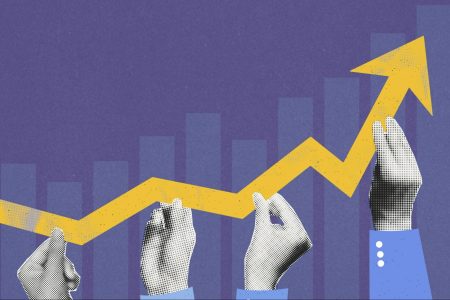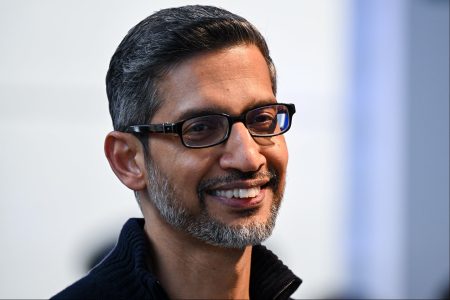Investors seeking generous yields increasingly have turned to private credit, helping to grow the market into a US$1.4 trillion sector, according to data from Preqin, a London-based provider of alternative markets data and analysis.
The draw for investors to private credit is understandable. Yields on these investments—which are largely based on floating-rate loans made to small and mid-sized companies—often reach into double digits. The nearly US$53 billion Blackstone Private Credit Fund reported an annualized distribution yield of 10.6% in August, for instance.
But higher interest rates and a slowing economy have created several risks for the companies behind these securities, including the likelihood they could default on their loans, according to Andrzej Skiba, head of the U.S. team for RBC Global Asset Management’s BlueBay Fixed-Income in Stamford, Conn.
Those with a predilection for higher-yielding securities are better off looking at the public high-yield market, where investors can receive rates of 9% on bonds of companies that have lower levels of leverage and far less risk of default, Skiba says.
Historically, investing in debt-burdened companies during times of economic distress hasn’t been a wise move. During a recession, 10% or more of high-yield bonds tend to default, Skiba said in a July note to clients. But if a recession does happen soon—even if some banks are deeming it less likely today—defaults in high-yield securities, or junk bonds as they are more commonly known, will be “significantly lower” than in the past, the note said.
By contrast, defaults in private credit loans made directly to small and mid-sized companies—which represent about 50% of this market, according to the International Monetary Fund—are likely to be high, Skiba said.
“We’re already seeing leveraged loan defaults running well ahead of high-yield bond defaults in the current cycle,” he said in the note.
In a conversation with Skiba, Penta dug into the details of why public high-yield bonds are likely better bets than private credit for the yield-seeking investor.
Not All High-Yield Bonds Are ‘Junk’ Now
“This is not the high yield that you are normally used to coming into a slowdown or a recession,” Skiba says. “We’re in a very different shape.”
A big reason is that companies that turn to private credit receive loans that adjust to benchmark interest rates, such as the U.S. prime rate. As rates rise, companies are forced to pay more interest, leaving less cash available to plow into capital expenditures or other expenses.
In the report, the firm details how the so-called interest-coverage ratio—which determines how many times a company can pay the interest on its loans from incoming cash flow—has slid since 2021 for companies that take out private loans. Currently, these companies only have the resources to pay less than two times their interest costs, according to the RBC note. Those levels are flashing caution, if not a “red alert,” Skiba says.
The situation is in stark contrast to the high-yield bond market, which in 2020 and 2021 saw huge numbers of companies issue fixed-rate securities with coupons of 3% or 4%—extremely low by historical standards. As a result, “companies that financed debt through public markets are paying very little interest, leaving them with more cash to run their businesses,” Skiba says.
Interest coverage levels for companies with high-yield debt is close to historic highs of nearly six times, as a result. Also, because these companies are paying relatively low levels of interest, few need to refinance at today’s higher rates. For the rest of this year, only about US$15 billion out of a potential US$1.3 trillion in high-yield debt is maturing. “So high-yield companies will have that really high interest cover, well in excess of five times, for quite some time ahead,” he says.
Also, Skiba says, several so-called “zombie” companies with shaky finances and high-yield debt on their books defaulted in 2020 during the onset of the Covid-19 crisis, meaning the current market is light on default candidates.
High Costs for Companies Refinancing Private Credit
The situation is different for many private-credit companies that need to refinance at high rates. A related example is Finastra, a fintech company owned by private-equity firm Vista Equity Partners, which needed to take out a loan of nearly US$5 billion in August to refinance debt, according to several published reports. The company turned to the private-credit market for the loan, but first, Vista Equity was required to infuse Finastra with an additional US$1 billion to lower the company’s leverage, according to an Aug. 19 article in the Financial Times. The interest rate on the loan? 12.6%, the newspaper said.
“When you have companies that have to pay low mid-teens in terms of the cost of funding, you can see how when you take into account [capital expenditures] that you also need to spend to grow, there’s no cash flow left,” Skiba says.
Though 12% may be an exception, many companies are paying in excess of 10%, he says.
Turning the Tide
Getting private-credit investors—which include institutions in addition to wealthy individuals and families—to opt for high-yield bonds instead isn’t easy. Private credit has achieved a reputation for providing high yields with strong protections for investors.
But as a flood of money surged into the sector—it was only US$300 billion in size in 2010, according to Moody’s—underwriting standards for the loans weakened, the RBC note said.
“As we have seen with pretty much every industry, when the wall of money is rushing through the door, all of the standards get weakened,” Skiba says. He quickly adds, however, that he’s “not saying that high-yield market has been this pristine, amazing space,” as it, too, once suffered from weaker underwriting standards in the face of an onslaught of investor interest.
Some investors believe that recently issued private loans have enabled investors to ensure a less aggressive capital structure, providing more protection alongside more attractive prices and yields. The problem, Skiba says, is these better investments are often only accessed through a pool of loans that is likely to include riskier credits.
Though high-yield bonds are likely to experience their ups and downs as the economy slows, Skiba believes investors are being adequately paid for that risk.
“If you look back at this time and said, ‘I locked in returns of close to 10% on my public high-yield portfolio’—that should not be a bad type of return by historical standards,” Skiba says.
Read the full article here









